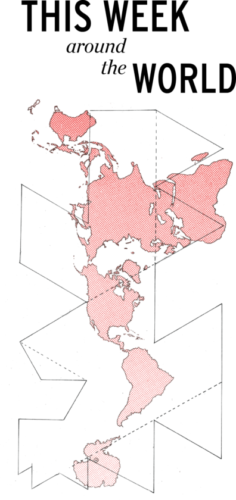Oxycontin, fentanyl, morphine, heroin. Opioids have gained attention in the United States since overdose rates began escalating in 2010. In 2016 alone, over 62,000 people died from general drug overdoses, 66 percent due to illicit and prescription opioids. However, the issue is not isolated to the U.S.
A recent study from the University of Wisconsin lists Italy, New Zealand, Canada, Germany and Denmark as some of the top countries with growing numbers of per capita opioid prescriptions. As a whole, wealthier regions of North America and Europe rank highest in prescription opioid consumption, hosting nearly all 15.6 million global users of manufactured opioids.
A 2016 report from the United Nations Office on Drugs and Crime states that an additional 17.3 million people use illicit opiate drugs, primarily heroin and raw opium. Global production of illegal opiates has maintained a constant position in the global market since the turn of the century. These drugs are extracted directly from poppies, rather than manufactured in pharmaceutical labs, and make up an industry worth about $70 billion.
Afghanistan alone produces and distributes between 63 and 90 percent of the world’s opium. With immense influence over the national political economy, the country’s landowners, warlords and traffickers rake in $61 billion of underground money, some of which goes into the pockets of Taliban insurgents. A representative from the International Crisis Group in Kabul told VICE News, “Right now, growing opium makes more money than anything else for Afghan farmers, so it’s going to be very hard to stomp out.”
The number of opiate users in Afghanistan and its surrounding areas is rising alongside increased production. Traffickers ship opium from Afghanistan first to trading ports in central and south Asia and the coasts of Africa, then to the leading markets of Western Europe, Russia, the U.S. and China. Mexico and Columbia feed into North American trade, and Myanmar and Laos into Asian trade.
This complex web of illegal drug trading has proved difficult for world leaders to untangle. Despite the doubling of seizure and interception rates from the 1980s and ‘90s to the early 2010s and an increase in the percentage of users seeking treatment, the opium and heroin markets remain stable. The UNODC therefore emphasizes the importance of managing drug issues as part of sustainable development, looking at the mutually reinforcing relationships with organized crime, violence, unstable governance and corruption.
Another factor is the correlation between substance abuse and social position. According to the UNODC, “Higher socioeconomic groups have a greater propensity to initiate drug use than lower socioeconomic groups, but it is the lower socioeconomic groups that pay the higher price as they are more likely to become drug dependent.”
Reducing inequality and providing more comprehensive public health services could curb demand for opiate drugs, but it is doubtful these issues will be prioritized. Caught in the middle of conflict, economic instability and rising global inequality, we seem to have other issues taking priority.






